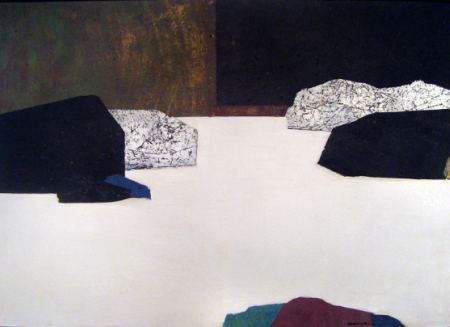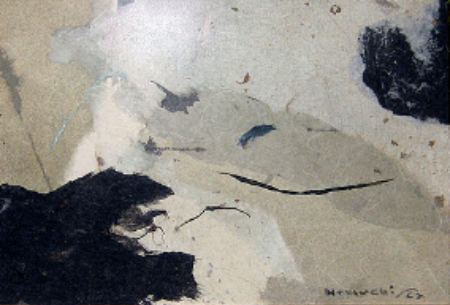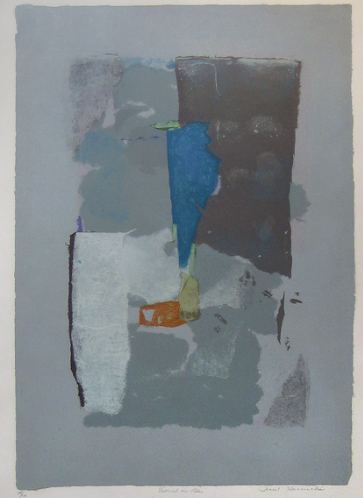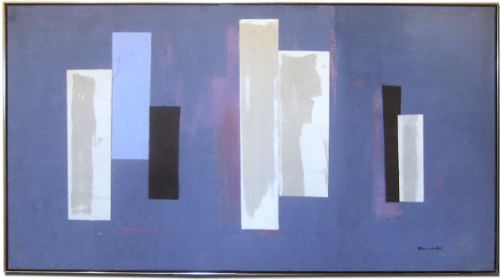The process to which the French word collage refers was invented by the Japanese more than 500 years ago. They tore strips out of old paintings, calligraphies and colored paper patches to reuse in new work.
Born in Japan, Seattle artist Paul Horiuchi (1906-1999) used collage much as his forebears did:
to set a meditative mood and to orchestrate color, form
and texture into a harmonious composition.



 Horiuchi fused the sensibility of the Japanese rock garden with Western modernist expressive abstraction.
Horiuchi fused the sensibility of the Japanese rock garden with Western modernist expressive abstraction.
Seattle artREsource is host to a small but fine survey of his work, from the 1950s to the 1980s. Run by Jena Scott, artREsource is a gallery devoted to the secondary market. Rarely has she a chance to organize an exhibit, but once she had half-a-dozen first-rate Horiuchi’s, she sought more to make the show.
Horiuchi came to the States in his teens. He was working for the railroad in Rock Springs, Wyoming, when FDR signed Executive Order 9066. Because he, his wife and two young sons weren’t on the West Coast, they escaped detention. Instead, isolated from other Japanese-Americans and hearing rumors that they would be arrested or even killed, they burned a collection of old Japanese books and prints that had been in their family for generations.
Fired by the railroad for being of Japanese descent, he and his family lived in their car and later in a homemade house on a
truck, making a living through janitorial and gardening work.
The paintings and drawings he made during and before this period were stored in a friend’s basement and lost in a flood.
By the time he arrived in Seattle, he was a 40-year-old railroad man, auto mechanic, sign painter and artist. Mark Tobey was for him a catalyst, although when Horiuchi began making collages in 1956, Tobey told him to stick to watercolors, because his watercolors were so spare and beautiful.
In 1962, he created the 70-foot-long Mural Amphitheater for the World’s Fair in Seattle.
During his career, he was awarded prizes and purchase awards from the Ford Foundation, the Rome-New York Foundation and the Carnegie Art International. Japan designated him a sacred treasure.
The tumult of his life does not appear in his work. Instead, there’s a serene balance of color and weight with a strong, underlying vitality, a sense of dynamic forces being brought into line.
Through May 8. (Extended through May 29.)



Leave a Reply